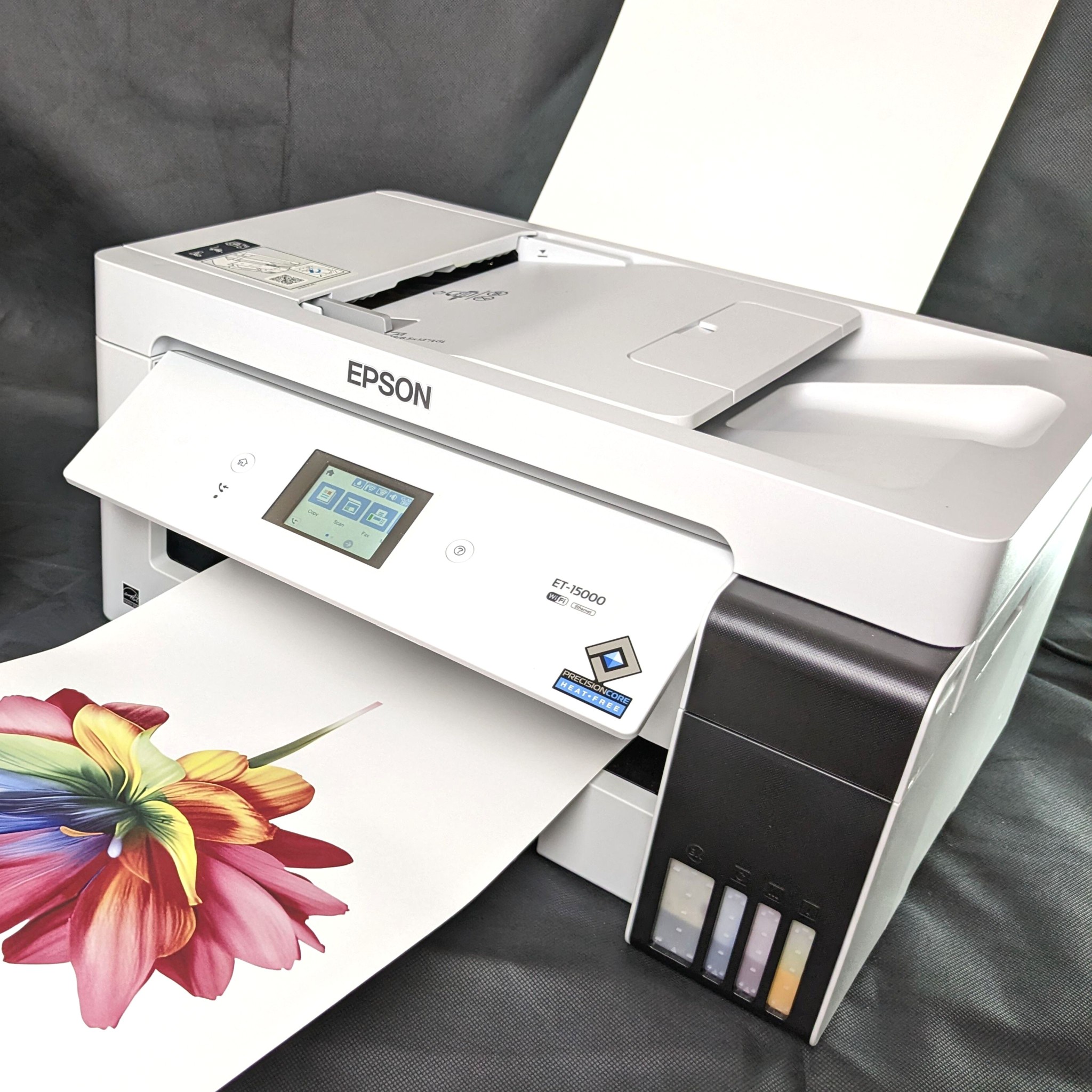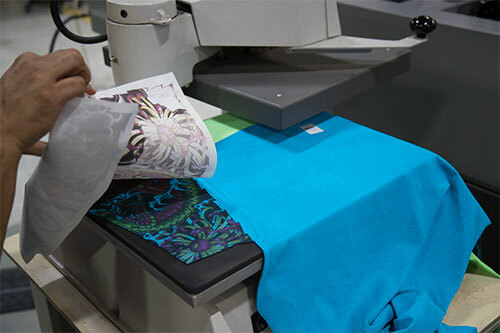How Screen Printing Transforms the Branded Clothing Industry
How Screen Printing Transforms the Branded Clothing Industry
Blog Article
Innovations in DTF Printing: Exactly How It's Changing the Industry
The textile printing market is going through a substantial transformation, driven by the advanced improvements in Direct-to-Film (DTF) modern technology. These innovations are not only enhancing print high quality and adaptability yet also streamlining the entire printing process. With remarkable ink solutions, boosted movie and adhesive technologies, and the combination of automation, DTF printing uses vivid, resilient prints on a range of textiles, fulfilling the raising need for modification. As businesses seek extra ecologically friendly and effective remedies, the effects of these improvements warrant a closer exam into exactly how they are shaping the future of fabric printing.
Advancements in DTF Modern Technology
Advancing quickly, DTF (Direct-to-Film) printing modern technology has undertaken significant enhancements that are changing the textile sector. Modern DTF printers utilize sophisticated ink solutions that result in dynamic, sturdy prints with high resolution and shade accuracy.

Furthermore, improvements in movie and glue technologies have improved the overall application procedure. New movies supply far better flexibility and bond, improving the durability and washability of the printed layouts - Branded clothing. This ensures that the prints keep their honesty and vibrancy also after several washes
Lastly, ecological factors to consider have actually triggered the development of environmentally friendly DTF solutions. Producers are progressively adopting lasting methods, such as making use of recyclable films and water-based inks, straightening with international efforts to decrease the industry's eco-friendly footprint.
Benefits Over Typical Techniques
When comparing DTF printing to traditional approaches such as screen printing and direct-to-garment (DTG) printing, numerous unique advantages arise. heat transfer vinyl printing. Among the most substantial benefits is its convenience in material compatibility. Unlike display printing, which commonly requires details fabric kinds, DTF printing can be put on a more comprehensive series of products, including cotton, polyester, and blends, without endangering print high quality
An additional noteworthy benefit is cost-effectiveness, especially for tiny to medium-sized orders. Conventional display printing becomes financially viable just at greater volumes as a result of the configuration prices involved. In contrast, DTF printing removes these arrangement costs, making it extra budget friendly for smaller sets and one-off layouts.
Moreover, DTF printing stands out in longevity and washability. Additionally, DTF printing offers faster turnaround times.

Improved Style Capacities
DTF printing supplies boosted style capabilities that set it besides typical printing approaches. This technology enables a more comprehensive range of vivid shades, complex information, and nuanced gradients, offering designers with unprecedented adaptability. The process involves publishing a layout onto a special film, which is then moved to textile. This permits high-resolution prints that preserve clarity and intensity, also on complicated patterns and small message.
Moreover, DTF printing sustains a broad array of textiles, including cotton, polyester, blends, and even non-textile substratums. This flexibility opens doors for innovative applications in diverse sectors such as fashion, home style, and marketing products. Unlike display printing, which can be limiting as a result of shade separation and pattern development, DTF printing simplifies the process, making photo-realistic and multi-color styles extra easily accessible.
In addition, DTF printing excels in achieving constant shade precision and vibrancy. In significance, DTF printing equips designers to press the boundaries of creativity, delivering visually spectacular results that were previously unattainable.
Cost and Time Performance
Among the noteworthy benefits of DTF printing hinges on its price and time efficiency, making it a preferred selection for lots of businesses. By removing the demand for display configurations and comprehensive pre-production procedures, DTF printing considerably decreases initial prices. Unlike standard techniques that need substantial financial investment in displays and setup times, DTF printing permits direct application onto different products with minimal prep work. This decrease in configuration time equates into faster manufacturing cycles, making it possible for organizations to satisfy orders more promptly.
Moreover, DTF view printing excels in producing brief runs and customized orders cost-effectively. The capability to create high-quality More hints prints without the demand for big quantity dedications reduces waste and maximizes resource allowance. This flexibility is especially beneficial for small companies and startups that may not have the capital to purchase massive production runs.
In regards to operational performance, DTF printing's streamlined workflow improves total productivity. The innovation's compatibility with a large range of substrates and textiles additionally expands its application extent, lowering the need for multiple printing systems. Consequently, organizations can achieve a quicker turnaround time, boosting customer satisfaction and competition in the marketplace. Therefore, DTF printing stands out as a transformative option in the printing sector.
Future Trends in DTF Printing
Preparing for future patterns in DTF printing discloses a landscape noted by fast technological developments and enhanced market need (screen printing). One substantial pattern is the combination of man-made knowledge (AI) and equipment understanding algorithms to optimize print high quality and improve procedures. AI-driven systems can predict potential problems and adjust settings in real-time, making certain consistently high-quality outcome
Additionally, innovations in green inks and lasting materials are expected to get grip. As environmental concerns become more pressing, the market is most likely to see a change towards eco-friendly and non-toxic inks, reducing its ecological impact.
Personalization and customization will certainly likewise play an essential role. With the growing customer demand for distinct, customized items, DTF printing technologies are evolving to offer more intricate and thorough modification options. This fad is supported by enhanced software application remedies that permit for even more complicated and innovative styles.
Lastly, the combination of DTF printing with various other electronic platforms and shopping solutions will certainly become Related Site extra seamless. This connection will certainly enable organizations to supply on-demand printing services straight to customers, additionally driving growth in the market. These trends collectively highlight a future where DTF printing not only meets yet surpasses the progressing requirements of the market.
Final Thought

When comparing DTF printing to typical methods such as display printing and direct-to-garment (DTG) printing, several unique benefits emerge. Unlike display printing, which frequently calls for particular textile types, DTF printing can be applied to a more comprehensive range of products, including cotton, polyester, and blends, without jeopardizing print top quality.
DTF printing provides improved layout capabilities that establish it apart from traditional printing techniques. Hence, DTF printing stands out as a transformative solution in the printing industry.
Advancements in DTF printing considerably improve the fabric printing industry by offering premium print flexibility, performance, and high quality.
Report this page